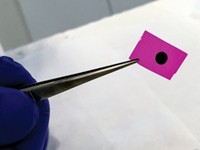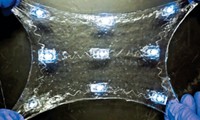Advertisement
Grab your lab coat. Let's get started
Welcome!
Welcome!
Create an account below to get 6 C&EN articles per month, receive newsletters and more - all free.
It seems this is your first time logging in online. Please enter the following information to continue.
As an ACS member you automatically get access to this site. All we need is few more details to create your reading experience.
Not you? Sign in with a different account.
Not you? Sign in with a different account.
ERROR 1
ERROR 1
ERROR 2
ERROR 2
ERROR 2
ERROR 2
ERROR 2
Password and Confirm password must match.
If you have an ACS member number, please enter it here so we can link this account to your membership. (optional)
ERROR 2
ACS values your privacy. By submitting your information, you are gaining access to C&EN and subscribing to our weekly newsletter. We use the information you provide to make your reading experience better, and we will never sell your data to third party members.
Materials
Nanomaterial For Joining Tendon And Bone
Scientists report an easy way to make synthetic calcium phosphate materials that better mimic natural mineral gradients
by Aaron A. Rowe
June 29, 2009
| A version of this story appeared in
Volume 87, Issue 26
Surgeons routinely repair rotator cuffs, anterior cruciate ligaments, and other spots where bone meets soft tissue, but often those interfaces do not heal well. Such junctions are typically stiff and calcified on one side and soft on the other, with a gradual transition in between. Xiaoran Li, Stavros Thomopoulos, Younan Xia, and colleagues at Washington University in St. Louis have found an easy way to make synthetic materials for joining damaged tendon to bone that mimic natural mineral gradients (Nano Lett., DOI: 10.1021/nl901582f). They position a mat of polymer nanofibers at an angle in a glass vial and then slowly introduce simulated body fluid with a syringe pump. Their procedure yields a composite that gradually varies from 0.7 to 37.8% calcium phosphate along its length, making it twice as stiff on one side as it is on the other. Xia says that the team is testing the material in rats with rotator cuff injuries.





Join the conversation
Contact the reporter
Submit a Letter to the Editor for publication
Engage with us on Twitter